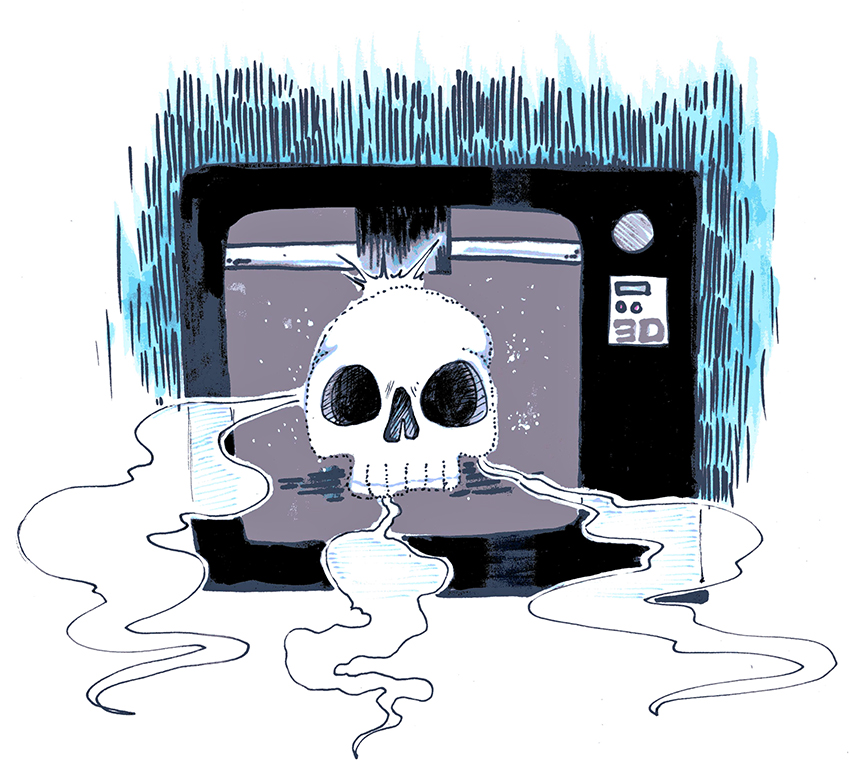Researchers have found that 3-D printing may be harmful to our health.
In a study published in the journal “Environmental Science & Technology,” Neil Crain, an environmental engineering research scientist and others have found that 3-D printers produce emissions that may cause lung problems or cancer.
They measured two types of dangerous emissions: ultrafine particles and volatile organic compounds. Scientists found that different types of 3-D printers emitted both particles.
Ultrafine particles, which have diameters of less than one hundred nanometers, cause lung problems, according to the Environmental Protection Agency. Volatile organic compounds cause damage to the lungs, brain, and spine.
The researchers found that the 3-D printers also produce styrene, a volatile organic compound that was associated with an increased risk of leukemia and lymphoma by the National Institute of Health.
Manufacturers once industrially made products that people can now make with personal 3-D printers. Downsizing production to individual 3-D printers didn’t eliminate hazardous emissions, which lead researchers to conduct this study. Emissions once found in factories are now being produced in offices and schools, Crain said.
Parham Azimi is an environmental engineering Ph.D. candidate at the Illinois Institute of Technology and first author of the study.
“We are not aware of any regulation or safety guideline for using 3-D printers in terms of emissions,” Azimi said.
The toy manufacturing company Mattel recently came out with personal 3-D printers for children, which lets them design and print their own toys.
“They are used for making toys for kids at home, prototyping prosthetic limbs, making tools in the international space station, or even making a new 3-D printer,” Azimi said.
In the future, users will likely enclose or properly ventilate printers, according to Crain. Researchers in the study recommend designs with low-emitting materials and filtration systems to avoid emissions.
“3-D printers are a new technology,” Crain said. “Like many new technologies their adoption should probably be done very carefully.”





















